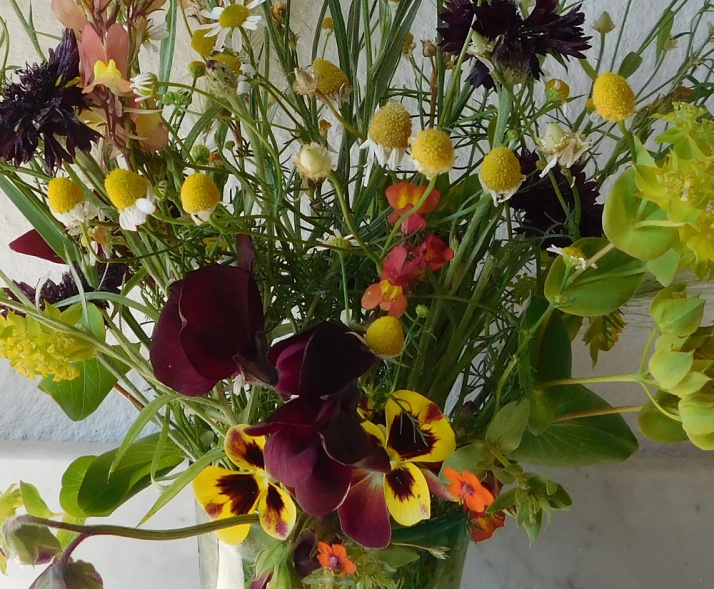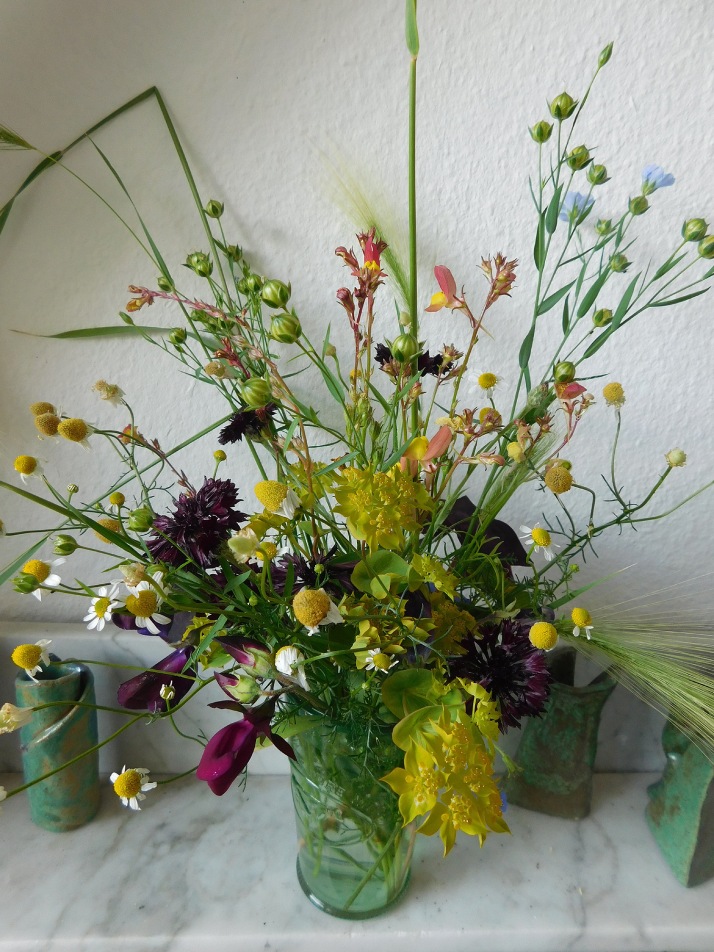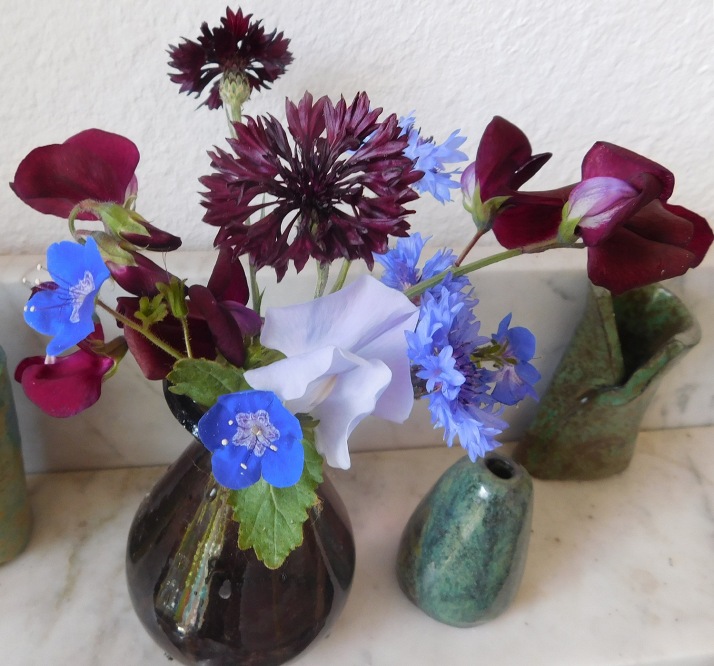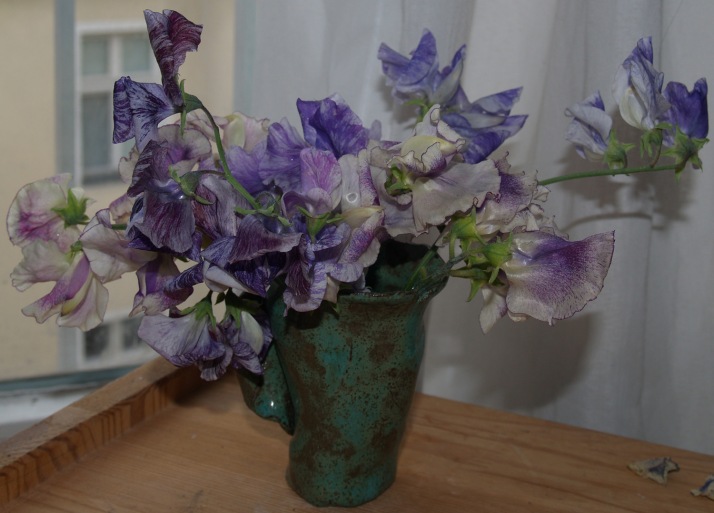This week I finally join the fantastic meme “In a vase on Monday”, hosted by Cathy from Rambling in the Garden. The vase is an enhanced version of the one I showed last week. I wanted it to be “rustic” and airy and summery bright, but with a solid colour base.
Dark burgundy mixed with chartreuse always works for dramatic effects. I combined Cornflowers (Centaurea “Black Ball”) with fragrant Sweet Peas (Lathyrus “Black Prince”) and a few leaves of Oxalis triangularis ssp. triangularis for the dark base notes. Hare’s Ear (Bupleurum rotundifolium griffithii) and wild Chamomile provide citrussy yellow. Toadflax (Linaria maroccana “Licilia Peach”) and Scarlet Pimpernell (Anagallis arvensis) loosen up the contrast with orange and peach shades. Flax seeds and Hordeum jubatum give rhythm, height and light reflexes to the composition.
The vase is currently the main bouquet on my kitchen table. Hare’s Ear (and of course the seedheads) last the longest in a vase. The first ones to wilt will be the Sweet Peas. Chamomile looses its petals rather quickly, but still provides a nice rhytm with the Flax. In a few days I will probably be able to add “Mariska” florist Dill.
There haven’t been many new blooms in the 5th floor cottage garden over the weekend. I hope more Sweet Peas will open this week. “Hotham Red” shows quite a few buds. The multiflora “Blue Wonder” is finally starting to, well, “multiflore” with up to five buds per raceme. The colour has improved, too: It now shows the clear blue I was hoping for. Will definitely grow it again next year.
Scarlet Pimpernell is at its best now – when the sun is out, otherwise the coppery orange stars won’t open.
Although the blossoms are tiny, pollinators seem to really like them. There’s always a bee or bumblebee somewhere in the container.
The first borage opened in the herb garden this morning. Obviously still undecided whether to turn pink or blue.
I really hope I have loads of them by next Monday, because I would like to arrange a vase completely in blue shades.
UPDATE, June 22nd
I have now added a centrepiece, an Iceland Poppy which surprised me this morning. Plus dill “Mariska” (not totally in bloom yet). Besides, I deadheaded some of the cornflowers. “Black Ball” doesn’t really last in a vase.



















